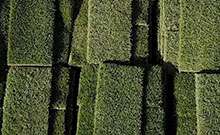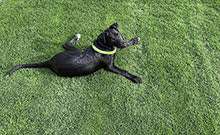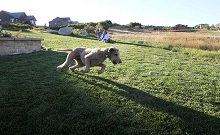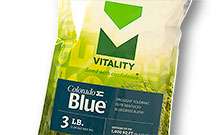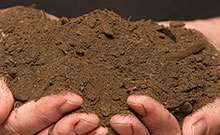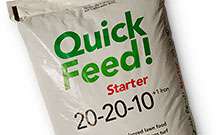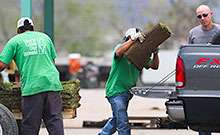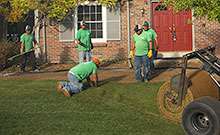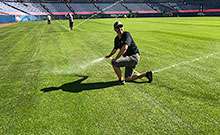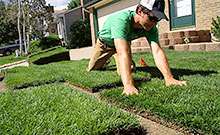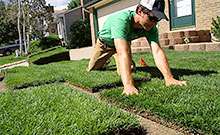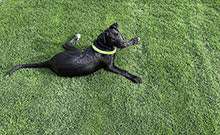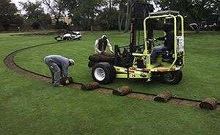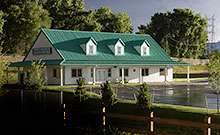Different Grasses for Colorado Lawns

Bluegrass
Kentucky Bluegrass is the most widely used turfgrass in the Denver metro area. About 95% of all lawns and parks are Kentucky Bluegrass. Bluegrass produces a fine, dense textured turf that can stand up to heavy traffic and use. Bluegrass is a rhizomatous turf that spreads through underground roots or rhizomes and produces new grass plants to stay dense and thick. It is deep green and is very heat and cold tolerant, and is the best choice for high elevation use. Bluegrass also is very drought-resistant and will go dormant in the heat of the summer if not watered. Once it cools down in the fall and warms up in the spring, bluegrass fills itself in. If you want a fine lawn that can take a lot of abuse from kids and dogs, bluegrass is an excellent choice.
- Can become dormant & survive 1 to 2 months without irrigation once it is established
- Uses 24″ to 26″ of supplemental irrigation per year for high-turf quality
- Uses 15″ to 20″ of supplemental irrigation per year for lower turf quality
- Best grass for high-use areas and dogs
Tall Fescue
Turf Type Tall Fescue is becoming more common in the Denver metro area due to its ability to go longer between waterings. If Tall Fescue develops a deep root system in properly amended soil, it can capture water from a greater soil depth. This can translate into less irrigation or fewer waterings per week. Tall Fescue is very heat and cold-tolerant, it has a good green color and a medium size blade. When mowed lower and more regularly, Tall Fescue can come close to a bluegrass texture and appearance. Tall Fescue can become clumpy if it is not watered or cared for properly.
- Uses 20″ to 22″ of supplemental irrigation per year for high turf quality if rooted deeply and subsurface moisture is present
- It can root very deep and pull water from deeper down in the soil. Deep soil prep is recommended before sodding
- Good turf quality, medium green, medium texture
Buffalograss
Buffalograss is a native, low-growing warm-season turfgrass that, once established, uses very little water. Buffalograss develops a very deep root system and likes clay soil. Because of this deep root system, it can draw water and nutrients from a large area. Buffalograss thrives on 1/4 inch of water per week during the heat of the season. Buffalograss is light green and has a soft fine blade that stops growing around 6 inches. It is slow-growing and only needs mowing every two to three weeks or can be let go for a native look. Buffalograss spreads and fills in with stolons or above-ground runners. Buffalograss goes dormant in the fall, September/October after the second frost and greens up in April. Natural rainfall will dictate when and if additional water is required for a buffalograss lawn.
- Uses 8″ to 10″ of supplemental irrigation per year for good turf quality that will tolerate moderate traffic
- Not best for the traditional lawn. It is brown and dormant from October to April. More of a native-type lawn.
- Good turf quality, light green, medium texture, very soft to the touch.

